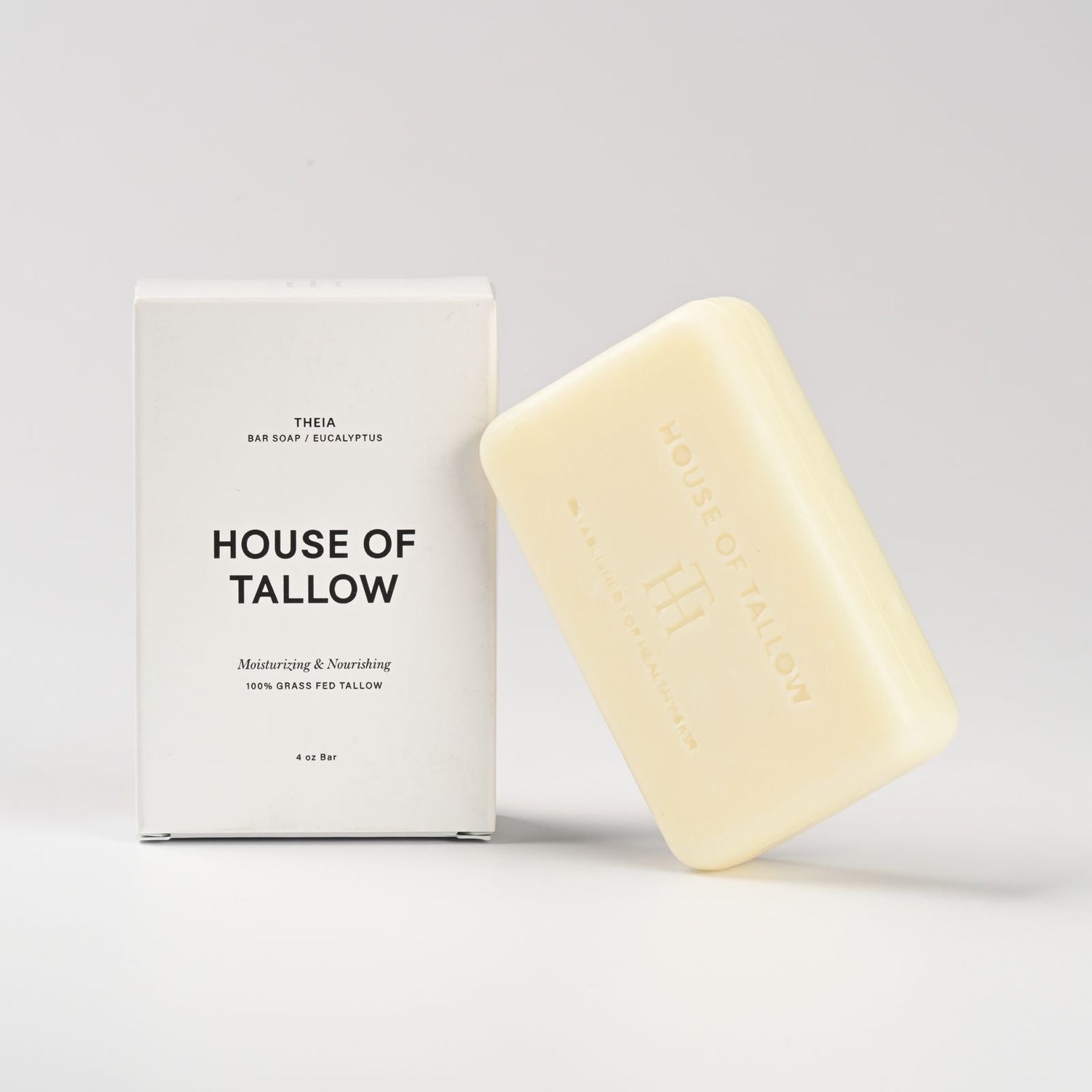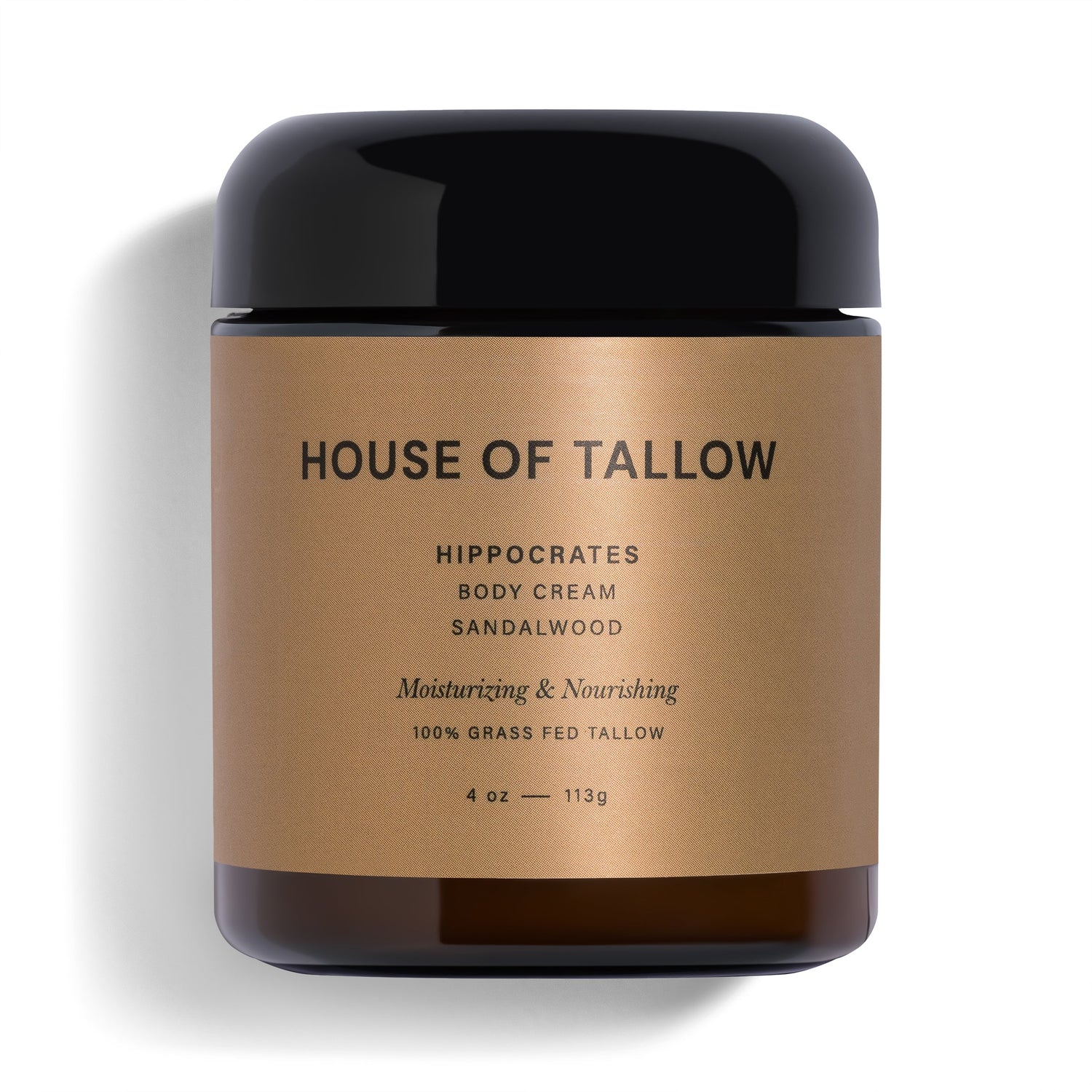How you store tallow impacts its shelf life and quality. Here’s a quick guide:
- Room Temperature: Lasts 3–6 months (up to 1 year if ideal conditions). Convenient for daily use but risks spoilage in warm or humid areas.
- Refrigeration: Extends shelf life to 6–12 months or even 2 years if frozen. Best for bulk storage or infrequent use but requires softening before use.
Quick Comparison
| Storage Method | Shelf Life | Ease of Use | Best For | Temperature Range |
|---|---|---|---|---|
| Room Temperature | Up to 1 year | Soft, ready to use | Daily use | Below 70°F (21°C) |
| Refrigeration | 6–12 months | Requires softening | Bulk or infrequent use | 32–40°F (0–4°C) |
| Freezing | Several years | Needs thawing | Long-term storage | Below 32°F (0°C) |
For best results, store tallow in airtight containers, away from light, heat, and moisture. Use a small portion at room temperature for convenience and refrigerate or freeze the rest for long-term freshness.
How to Make Tallow Shelf-Stable - Store in your pantry for over a year
Storing Tallow at Room Temperature
Storing tallow at room temperature can be a practical option if done properly to maintain its quality.
How Long Tallow Lasts at Room Temperature
When kept in airtight glass or stainless steel containers, tallow can last 3-6 months at room temperature. Under ideal conditions, this can stretch up to a year [1]. Maintaining a steady temperature between 60-70°F (15-21°C) plays a big role in extending its shelf life [4].
Convenience of Room Temperature Storage
Room temperature storage keeps tallow soft and easy to use, making it perfect for daily skincare routines or quick applications. There's no need to soften it beforehand, which adds to the convenience [6]. However, this method is more about accessibility than long-term preservation, especially in warmer or more humid areas.
Risks of Spoiling
Tallow's quality can degrade due to exposure to sunlight, humidity, air, or fluctuating temperatures [1]. To prevent this, store it in airtight containers in a cool, dry spot, away from heat or light [4]. Keep an eye out for any unusual smells or changes in texture, and discard it if spoilage occurs [5].
While storing tallow at room temperature is convenient, refrigeration can further extend its shelf life and maintain its quality, especially in areas with unpredictable climates.
Storing Tallow in the Fridge
Keeping tallow in the fridge slows down oxidation, extending its shelf life to 6-12 months - or even up to 2 years if frozen [4][3]. A temperature range of 32-40°F (0-4°C) helps protect its nutrients and prevents the breakdown of its compounds [1].
Longer Shelf Life in the Fridge
If you don't use tallow often or have a large supply, refrigeration is a smart choice. The steady cool temperature preserves the compounds that give tallow its effectiveness [1][4].
Challenges of Using Refrigerated Tallow
One downside of refrigerating tallow is that it becomes solid and harder to work with. To soften it, you can leave it at room temperature, warm it in your hands, or place the container in warm water until it reaches a usable consistency [1][3].
When to Refrigerate Tallow
Here are the situations where refrigeration works best:
| Scenario | Recommendation |
|---|---|
| Bulk Storage | Ideal for managing large amounts |
| Warm Climate | Necessary when temperatures exceed 70°F (21°C) |
| Infrequent Use | Great for occasional usage |
| Long-term Storage | Perfect for keeping it over 6 months |
Always use airtight containers to keep out moisture and avoid absorbing odors from other foods [1]. Opaque or dark containers can also help shield tallow from light [4].
For skincare products like those from House of Tallow, refrigeration helps maintain their nutrient levels and quality [2]. While refrigeration clearly has its benefits, the choice depends on your specific needs. We'll delve into those considerations in the next section.
Comparing Room Temperature and Fridge Storage
When storing tallow, the choice between room temperature and refrigeration depends on your needs. Room temperature storage is convenient and keeps the tallow soft and ready to use, but it doesn’t last as long. Refrigeration, on the other hand, extends its shelf life but requires some effort to soften the product before use.
Storage Method Comparison Table
| Storage Method | Shelf Life | Ease of Handling | Best For | Temperature Range |
|---|---|---|---|---|
| Room Temperature | Up to 1 year | Very easy - soft and ready to use | Daily/weekly use | Below 70°F (21°C) |
| Refrigeration | 6-12 months | Moderate - needs softening | Monthly use | 32-40°F (0-4°C) |
| Freezing | Several years | Challenging - requires full thawing | Long-term storage | Below 32°F (0°C) |
The best storage method depends on how often you use tallow. If you use it frequently, keeping it at room temperature in a cool, dark place ensures it’s easy to work with and always accessible [5].
For bulk storage or infrequent use, refrigeration is a better option. While it takes extra time to soften the tallow, refrigeration helps keep it fresh for occasional use [3].
Products like skincare balms, such as those from House of Tallow, benefit from refrigeration during warmer months to maintain their nutrient quality [2][6].
A popular approach is to split your supply: keep a small portion at room temperature for daily use and store the rest in the fridge or freezer for long-term preservation. This method balances convenience with extended freshness [5].
Whichever method you choose, proper storage techniques will help your tallow stay fresh and effective.
sbb-itb-a1b9fc0
Tips for Proper Tallow Storage
Storing tallow the right way is key to keeping it fresh and safe for use. Whether you're keeping it at room temperature or in the fridge, these tips will help you maintain its quality.
Use Airtight Containers
Store tallow in clean, dry glass or food-grade plastic containers with tight lids to limit air exposure. Opt for dark or opaque containers to shield it from light, which can degrade its quality over time [1]. This is especially useful for skincare products.
Keep It Free From Contamination
Contamination can quickly shorten tallow's shelf life [3]. Follow these guidelines to keep it clean:
- Use only clean, dry utensils - avoid touching tallow with your hands.
- Ensure storage areas and containers are moisture-free and clear of food debris.
- Never let water enter the container, as moisture speeds up spoilage.
- For skincare use, maintain strict hygiene to ensure the product stays effective.
Label and Rotate Your Stock
Label containers with storage dates, use-by dates, and storage conditions. Always use older stock first to avoid waste and ensure freshness. Tallow typically lasts 3-6 months at room temperature and 6-12 months when refrigerated [3].
Storage Tips for Skincare Users
Storing tallow-based skincare products correctly is key to keeping them effective, fresh, and high-quality.
How Storage Affects Texture
Temperature plays a big role in how tallow-based products feel and apply. If refrigerated, tallow firms up, so you'll need to warm it slightly before use. On the other hand, keeping it at room temperature ensures a smooth, creamy consistency that's easier to apply [3].
Preserving Nutrients in Tallow
Tallow is packed with vitamins like A, D, E, and K, but these nutrients can break down if not stored properly. To protect them, use airtight, opaque containers and store the product in a cool, dark place. Aim for a stable temperature below 75°F (24°C) to avoid oxidation and nutrient loss [3].
Why Storage Matters for House of Tallow Products

Products from brands like House of Tallow are designed to deliver therapeutic benefits, but proper storage is essential. Keep them in a cool, consistent environment, especially during hot months. Regularly check for changes in texture or scent to ensure the product remains in good condition [6].
"Whipped tallow balm requires more careful storage to maintain its texture. It should be stored in a cool, dry place away from direct sunlight. If it becomes too soft, refrigerating it for a short time can help firm it up again" [6].
Conclusion
The best way to store tallow depends on how you plan to use it and how long you need it to last. Keeping tallow at room temperature makes it easy to use daily but limits its shelf life to about 3-6 months [4]. If you want it to last longer, refrigeration is a better option, extending its shelf life to 6-12 months, though you'll need to soften it before use [3]. Maintaining a stable temperature below 75°F (24°C) helps prevent oxidation and keeps its beneficial properties intact [3].
For long-term storage, freezing is the way to go. It can keep tallow fresh for years, making it perfect for bulk storage or occasional use [3]. A smart strategy is to store a small amount at room temperature for everyday use and refrigerate or freeze the rest.
To ensure tallow stays fresh and effective, use airtight containers and check for changes in smell or appearance regularly [1]. Whether you store it on the counter or in the fridge, taking care of your tallow will help maintain its quality and benefits for skincare and other uses.
FAQs
How to keep tallow from spoiling?
To prevent tallow from going bad and keep its quality intact, proper storage and handling are essential.
Store tallow in airtight, non-reactive containers like glass or stainless steel. This helps protect it from oxidation and contamination. Keep it in a cool place, ideally below 75°F (24°C), to slow down oxidation and extend its shelf life [3].
- Temperature Matters: Refrigerating tallow is a great way to further slow oxidation and preserve it for longer [3].
- Clean Handling: Always use clean utensils when scooping or handling tallow to avoid introducing bacteria or other contaminants [3].
If you're using tallow in skincare products, consistent storage conditions help maintain its texture and effectiveness. Well-stored, natural tallow-based products stay usable throughout their intended shelf life [3].
If you notice an unusual smell, texture, or appearance, it’s best to discard the tallow, as these are clear signs of spoilage.




